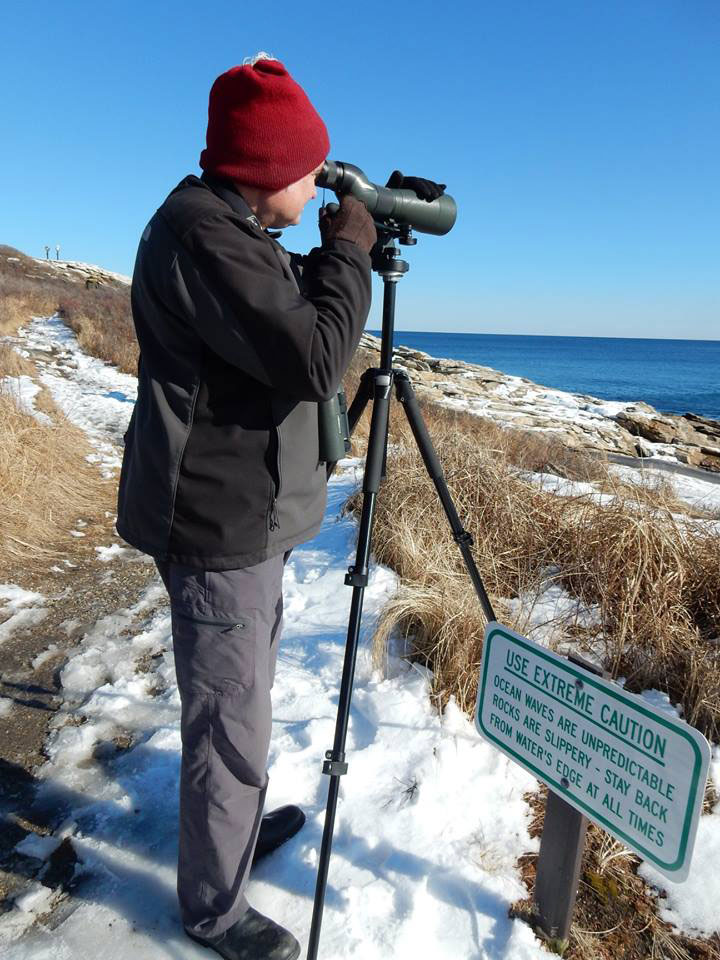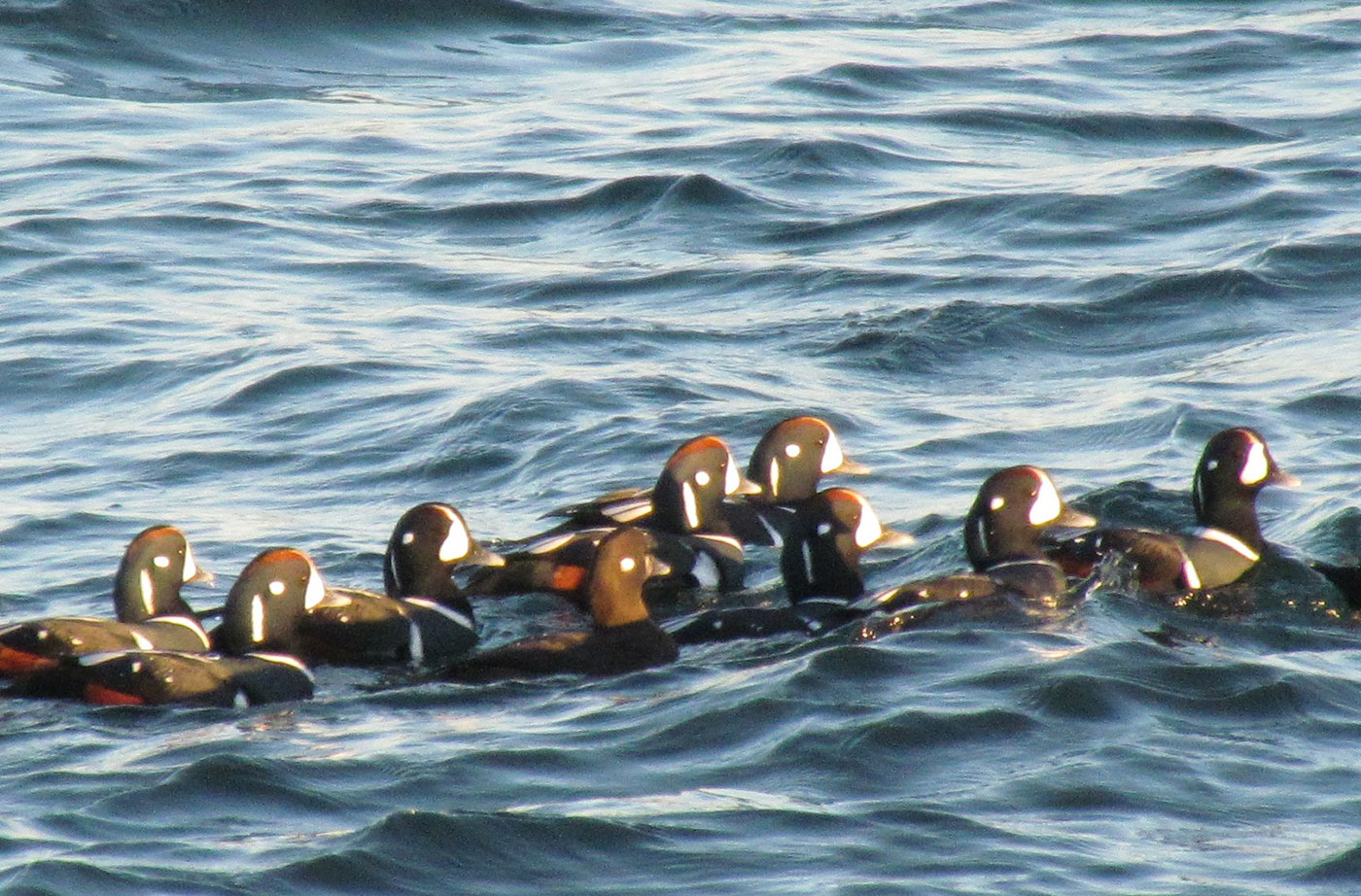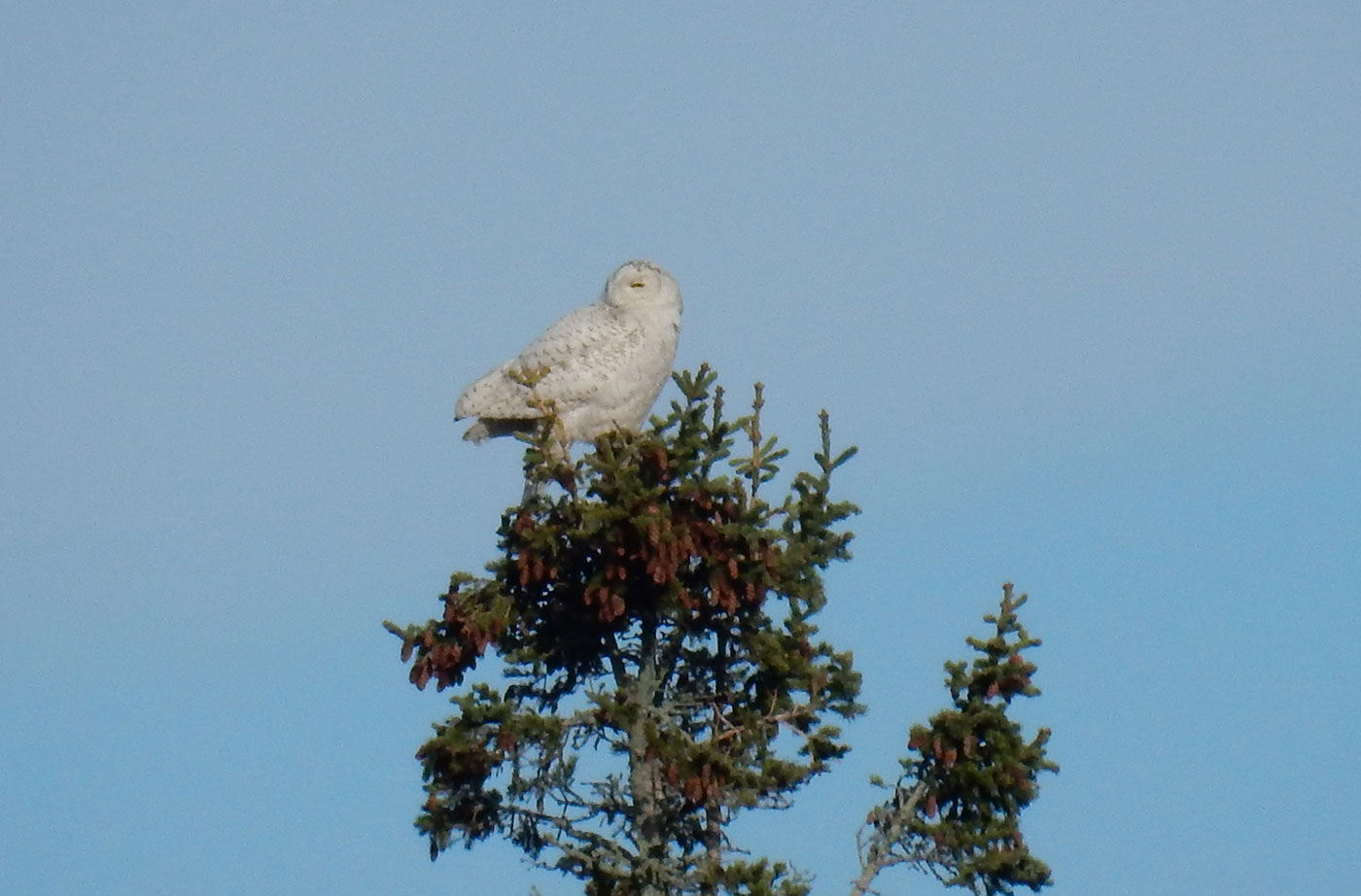Earlier in the year, we shared that we’ve decided to pursue a “mindfulness birding” Maine Big Year in 2019, keeping track of the different species we identify (by sight or sound) in the state. We noted, you may recall, that people who compete in Big Years do so with the hope of breaking a record. They zip off as quickly as possible to try to see any and every rare bird species that shows up.
We are not in that category.
That’s why we’re calling ours a “mindfulness Big Year.” Of course, we’re keeping an eye on bird listserves, Facebook pages, and eBird, but since we can’t usually just drop whatever we’re doing to go try and find every wild thing with feathers, we work our species goals into other aspects of our lives. Recently, we looked for a White-fronted Goose as part of our trip to get our son sized for his prom tux. The fitting was a success; the birding piece, not so much, as we discovered the reported goose was actually a domesticated bird by the name of “Blackie.” Go ahead, say it: It was a wild goose chase.
We have, however, had success elsewhere so far in 2019. We’ve seen a fair share of rare or uncommon species. That includes the famous Great Black Hawk at Deering Oaks in Portland before, sadly, it succumbed to the harsh winter conditions that it was not suited to endure. The Canvasback in Damariscotta was a pleasure to observe earlier in the winter as was the Northern Shoveler in Freeport. But there were a number of other rare birds that we did not (read: could not) “chase,” as birders describe the pursuit to try to see a particular individual.

Reid State Park is always a great place to look for birds. Jeff and Allison saw Surf and White-winged Scoters here in March. (Photo by Allison Wells)
We had just seen our first-of-the-year Eastern Phoebes and Tree Swallows when snow rolled in, morphing our excitement about the spring arrivals into concern for these insect eaters. Despite several inches of the white stuff still sticking to the ground, winter really has slid into spring, and we recently took stock of the winter birds we will likely have to wait until next November or December to try to find. While we did see a number of winter visitor icy-plumaged Iceland Gulls (including a surprise one that landed briefly in front of us at a busy intersection in Topsham), we did not see its larger winter cousin, the Glaucous Gull.
A handful of Common Redpolls graced us with their presence at our backyard bird feeder this winter, and we had a wonderful encounter with a flock of gentle, unassuming Pine Grosbeaks (both visiting from their northern Canada breeding range) but despite our high hopes, we never did find any of the big-billed, yellow Evening Grosbeaks. A few do breed here and there in Maine, though, and a friend has recently reported some in his yard, so we haven’t completely given up on that and plan to make a run next time he texts us that they’re there.
Purple Sandpiper, the only sandpiper species that winters along the Maine coast in large numbers, was a big miss until the past weekend. Saturday’s warm, sunny weather offered too good an opportunity to pass up a visit to the Rockland Breakwater with our son and his girlfriend, who had never been there before (and where we knew we had a good chance of seeing the species). Success!

Harlequin Ducks are among the more unusual species seen in Maine and take a little effort to find, along the wave-slapped rocky coast. (Photo courtesy of Jeff and Allison Wells)
We had beautiful views of the “lords and ladies” of the duck world here this winter—Harlequin Ducks—on a trip to Two Lights State Park in Cape Elizabeth back in February. A handful of Barrow’s Goldeneyes blessed us and many other birders with close-up views at the Freeport town landing this winter as well. But we were not able to lay eyes on that other Maine winter waterfowl royalty, the King Eider—one was seen briefly in Wells, too briefly for our schedule. That one will probably now have to wait until late November or December.
We enjoyed the splendor of several Snowy Owls in early 2019. Some winters it can be difficult to find one. On the other hand, despite much scanning of open field edges and the tops of trees and bushes, we were not lucky enough to get even a glimpse of the very rare winter visitor owl, the Great Gray Owl. A note from a friend told us about one he’d seen that day in the Midcoast area, but a day off from the office to try to find it was a bust. No regrets—better to have gone looking for a Great Gray Owl and find it has already moved on than to never have checked and wonder if you missed an opportunity.

Snowy Owls are not an easy bird to find most winters in Maine. This year, the authors saw one in Portland and Brunswick, but they missed a sighting of the even rarer Great Gray Owl. (Photo courtesy of Jeff and Allison Wells)
Now our focus is turning to the flood of spring arrivals that will soon jack up the number of species on our list (which has crept up over 90) to perhaps 150 or more. Just in the last few days we have added Northern Pintail and Green-winged Tail, and we’ve seen our first Osprey, Double-crested Cormorants, and Great Blue Heron of 2019. Other birders have reported Pine and Yellow-rumped Warblers. Yellow-bellied Sapsuckers, and Palm Warblers will be right along.
As spring continues to spring, we hope you, too, will be able take the time to enjoy the season, and, when you see a bird that holds the promise of spring and summer in Maine, that you will join us in being mindful!










Leave a Reply